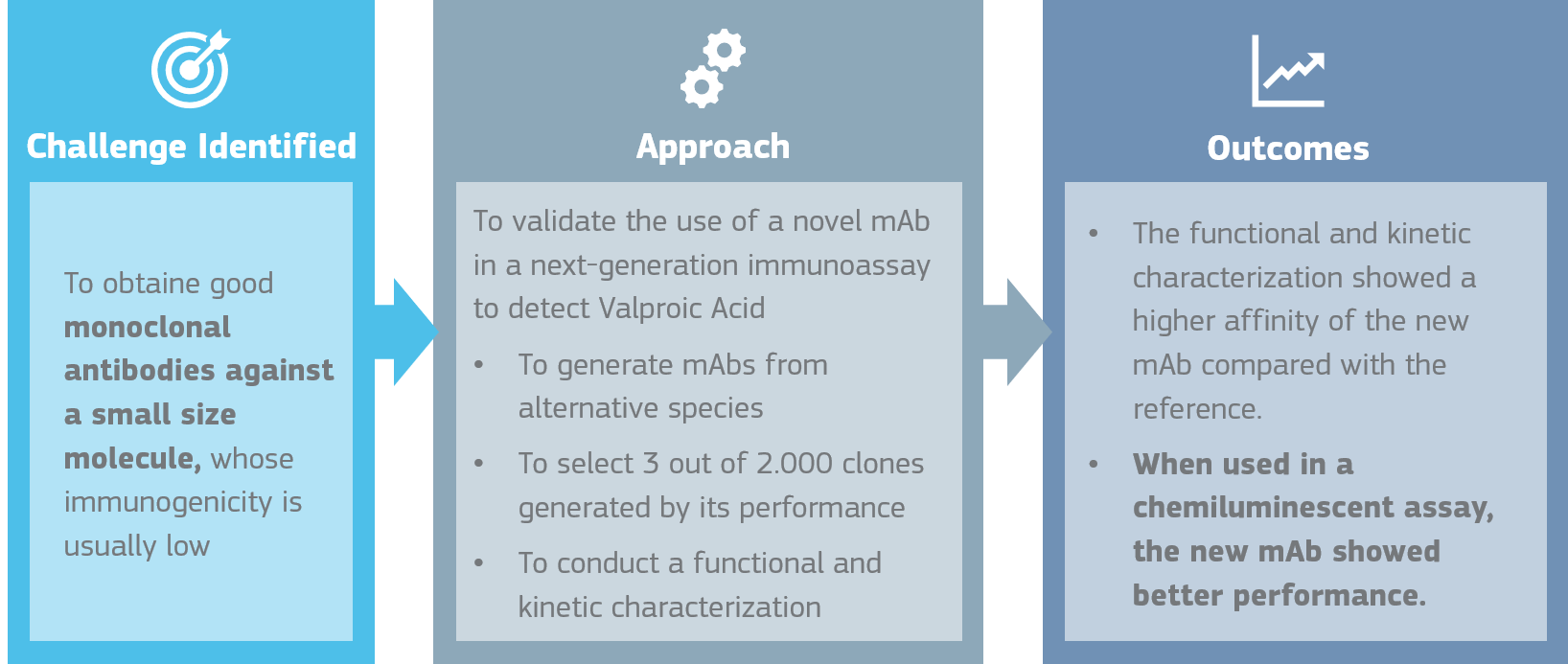
News Immunoassay
Finding the right IVD Biomaterial to detect small molecules: The case of Valproic Acid
October 22, 2020 - Spain

Biokit’s Innovation team forge ahead to solve critical challenges that we may face when developing immunoassays for our partner
In-Vitro-Diagnostics are playing a central role in current healthcare systems. Early diagnosis is key in order to achieve better patient outcomes, which is why current healthcare systems are moving from treatment to prevention. In order to keep up in this ecosystem, our partners must provide practitioners and their patients with innovative, reliable and high-quality immunoassays in a sustainable and efficient way.
For some parameters, like monitoring therapeutic drugs, it is key for the immunoassay to detect the metabolite in small quantities, since blood levels of therapeutic drugs should be maintained within a narrow therapeutic range.
At Biokit, we work alongside our partners towards the goal of developing next-generation immunoassays
Our Approach
Obtaining good monoclonal antibodies (mAbs) against a small-size molecule is a challenge since the immunogenicity of small molecules is typically low. The available mouse monoclonal antibodies (mAbs) against a specific small molecule have room to improve their performance, particularly when focusing on increasing the affinity of the antibody for the small molecule target. For this reason, we seized the opportunity to collaborate with an innovative company in order to validate the use of a novel mAb in a next-generation immunoassay to detect valproic acid, a small molecule for therapeutic use. SYnAbs can generate mAbs from alternative species other than mice. In this project, the mAb was generated in rats, a highly suitable species for developing mAbs against the small molecule that we were targeting.
A final selection of 3 clones from the initial screening of 2000 clones was made based on their capacity to be displaced by the lowest concentration of valproic acid. At Biokit, we conducted kinetic (Bio-Layer Interferometry) and functional assays with the mAbs obtained from the 3 clones selected. In this assay, a commercial mAb against valproic acid was used as a reference. Although the functional and kinetic characterisation provides valuable information, assessing how the mAb works for its intended use as an immunoassay, is key. For this reason, we used both the rat mAb and a commercial mAb to develop two different chemiluminescence immunoassays to detect valproic acid.

Outcome
The results of the functional and kinetic characterisation showed that the rat mAb had higher affinity when compared to the reference commercial mouse mAb.
When used in a chemiluminescence or chemiluminescent assay, the rat mAb demonstrated better performance than the reference commercial mouse mAb.
You can find out more about this project by viewing the following poster.
NEWS
Latest News
Please contact us directly via telephone or with the following form.
Tel. +34 93 860 90 00

